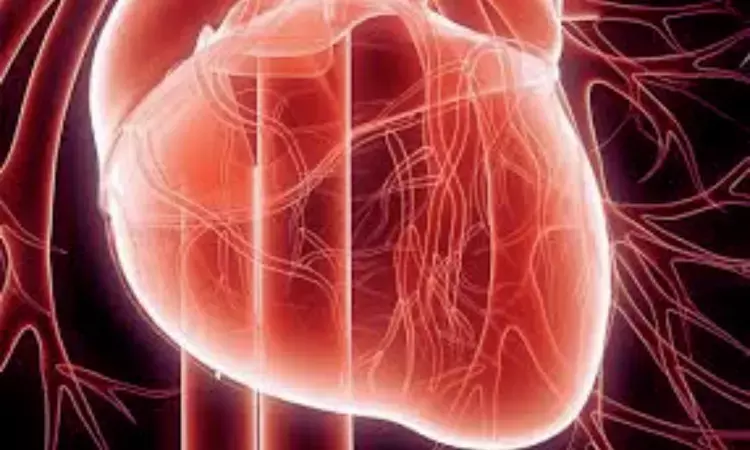- Home
- Medical news & Guidelines
- Anesthesiology
- Cardiology and CTVS
- Critical Care
- Dentistry
- Dermatology
- Diabetes and Endocrinology
- ENT
- Gastroenterology
- Medicine
- Nephrology
- Neurology
- Obstretics-Gynaecology
- Oncology
- Ophthalmology
- Orthopaedics
- Pediatrics-Neonatology
- Psychiatry
- Pulmonology
- Radiology
- Surgery
- Urology
- Laboratory Medicine
- Diet
- Nursing
- Paramedical
- Physiotherapy
- Health news
- Fact Check
- Bone Health Fact Check
- Brain Health Fact Check
- Cancer Related Fact Check
- Child Care Fact Check
- Dental and oral health fact check
- Diabetes and metabolic health fact check
- Diet and Nutrition Fact Check
- Eye and ENT Care Fact Check
- Fitness fact check
- Gut health fact check
- Heart health fact check
- Kidney health fact check
- Medical education fact check
- Men's health fact check
- Respiratory fact check
- Skin and hair care fact check
- Vaccine and Immunization fact check
- Women's health fact check
- AYUSH
- State News
- Andaman and Nicobar Islands
- Andhra Pradesh
- Arunachal Pradesh
- Assam
- Bihar
- Chandigarh
- Chattisgarh
- Dadra and Nagar Haveli
- Daman and Diu
- Delhi
- Goa
- Gujarat
- Haryana
- Himachal Pradesh
- Jammu & Kashmir
- Jharkhand
- Karnataka
- Kerala
- Ladakh
- Lakshadweep
- Madhya Pradesh
- Maharashtra
- Manipur
- Meghalaya
- Mizoram
- Nagaland
- Odisha
- Puducherry
- Punjab
- Rajasthan
- Sikkim
- Tamil Nadu
- Telangana
- Tripura
- Uttar Pradesh
- Uttrakhand
- West Bengal
- Medical Education
- Industry
Obicetrapib Improves Lipid Profile and Reduces Cardiovascular Events, Suggests Study

Australia: A pooled analysis of the phase 3 BROOKLYN and BROADWAY trials showed that obicetrapib, when added to high-intensity statin therapy, significantly lowered LDL-C, ApoB, and Lp(a) levels while increasing HDL-C. The treatment was also associated with a reduced incidence of cardiovascular events compared with placebo.
- The average age of participants was 66 years, and 36% of them were female.
- Baseline median lipid levels were LDL-C 92 mg/dL, HDL-C 48 mg/dL, ApoB 88 mg/dL, non-HDL-C 116 mg/dL, and Lp(a) 40.5 nmol/L.
- Treatment with obicetrapib led to a 37.8% reduction in LDL-C levels.
- ApoB levels decreased by 21.7% following obicetrapib therapy.
- Non-HDL-C levels dropped by 32.4% with obicetrapib treatment.
- Lp(a) levels were reduced by 32.5% in the obicetrapib group.
- HDL-C levels increased significantly by 140% compared to only 1.5% in the placebo group.
- The combined rate of coronary heart disease death, myocardial infarction, ischemic stroke, or coronary revascularization was lower in the obicetrapib group (3.9% vs 5.0%).
- A greater risk reduction was observed after six months of treatment (HR: 0.60).
- When coronary heart disease death, myocardial infarction, and revascularization were analyzed together, the risk was further reduced with obicetrapib (HR: 0.68).
- The reduction was most pronounced beyond the first six months (HR: 0.45).
- Improved lipid parameters—particularly LDL-C, ApoB, non-HDL-C, and Lp(a)—were strongly associated with lower rates of cardiovascular events.
Dr Kamal Kant Kohli-MBBS, DTCD- a chest specialist with more than 30 years of practice and a flair for writing clinical articles, Dr Kamal Kant Kohli joined Medical Dialogues as a Chief Editor of Medical News. Besides writing articles, as an editor, he proofreads and verifies all the medical content published on Medical Dialogues including those coming from journals, studies,medical conferences,guidelines etc. Email: drkohli@medicaldialogues.in. Contact no. 011-43720751


